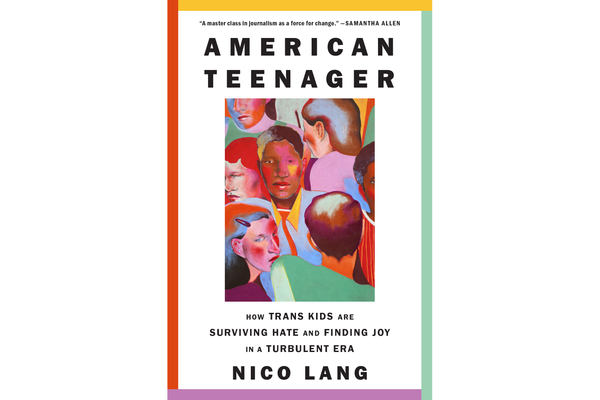It's Casual
A story of homophobia, and how it weaves its way so thoroughly into our culture.

I climbed out of a car one crisp Saturday morning in the parking lot of a veterinary clinic on Staten Island.
It was something of a field trip for our New Jersey Boy Scout troop on the way to a nearby campground. I was probably twelve or thirteen years old.
Out of the other car stepped one of our scoutmasters, who we called Doc. He was the owner of this vet practice, and was going to give us a tour.
I overheard his conversation with some of the other adult leaders as we filed toward the entrance. He was talking about his alma mater, an Ivy League college.
“Now it’s a bunch of flaming liberals,” he quipped in his signature lisp, born of a few missing teeth and a quick tongue.
“Doc!” the other adults quickly burst out. Not, it seemed, out of objection, but of censorship. They were trying to conceal their own laughter and set a good example for us kids.
I glanced over my shoulder to see the scoutmasters chuckling. I didn’t know what “flaming” meant back then. I didn’t know it was a slur characterizing flamboyant gay men. (Or that it was a lazy insult to be lobbed at just about anyone.)
But I didn’t need to. The message was clear that whatever flaming meant, it wasn’t good. And I sensed on some deep level, years before I ever had an inkling that I was gay, that this might be a word that would one day apply to me.
This experience certainly pales in comparison to some other homophobic and transphobic incidents I’ve chronicled in this newsletter. But I still think about it sometimes, because it really exemplifies the kind of casual homophobia that persisted throughout my experience in Boy Scouts.
I hardly, if ever, heard an explicit condemnation of homosexuality from the adults in my scout troop. Which is surprising, considering I was going through the ranks in the early 2010s, when controversy over gay membership in the Scouts was at an all-time high. Plus, my local scouting council had birthed the Supreme Court case against James Dale, which cemented the BSA’s right to ban gay members. (This was a fact that I was completely oblivious to until much later.)
But all of that said, there were certainly enough hints for any boy to understand what was “right” and what was “wrong:” casual comments uttered out of earshot, or homophobia masquerading as nostalgia for the “good old days.”
These messages certainly did not only flow from the adults in the room. Teenage boys, too, are experts at policing and reinforcing heterosexuality. Anyone who has ever been in a boys locker room knows this viscerally, I’m sure.
But it was, for lack of a better word, all very casual. It hardly even registered at the time, and has only become clear to me upon reflection all these years later. Maybe that’s because, back then, I didn’t identify as queer. Or maybe it’s because the use of anti-gay slurs was so pervasive among my peers that it didn’t even seem odd. These were words seemingly everyone used to connote weakness or deficiency of any kind.
They were so casual, yes, but that didn’t strip them of their power. These words hurt. Maybe I didn’t feel that pain when it happened, but it seems clear now that they built the foundation for my internalized homophobia.
So I find myself returning to a common refrain in my writing on this topic: These matters of culture are so crucial to how LGBTQ+ folks move through Scouting, and yet so difficult to change. They are not matters of policy, though policy certainly helps. They are changes that happen slowly, maybe even imperceptibly at first, and we may not bear the fruits of our progress until much, much later.



